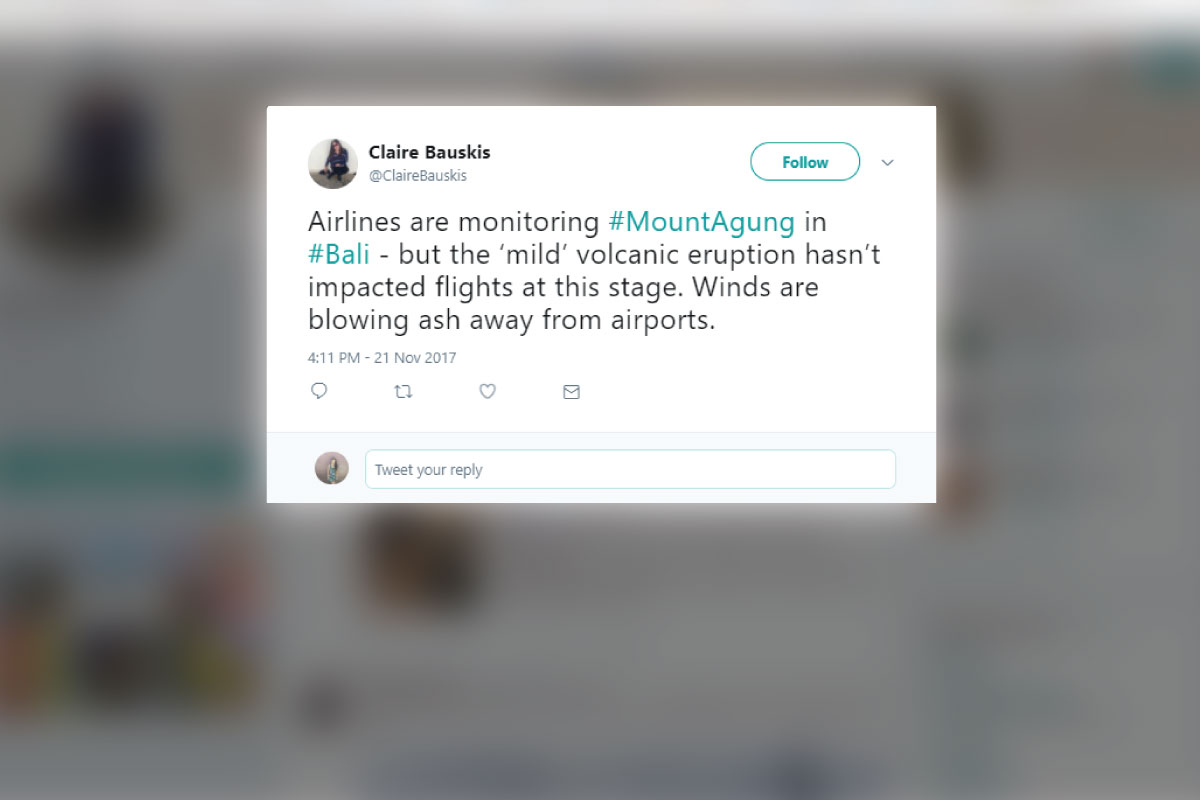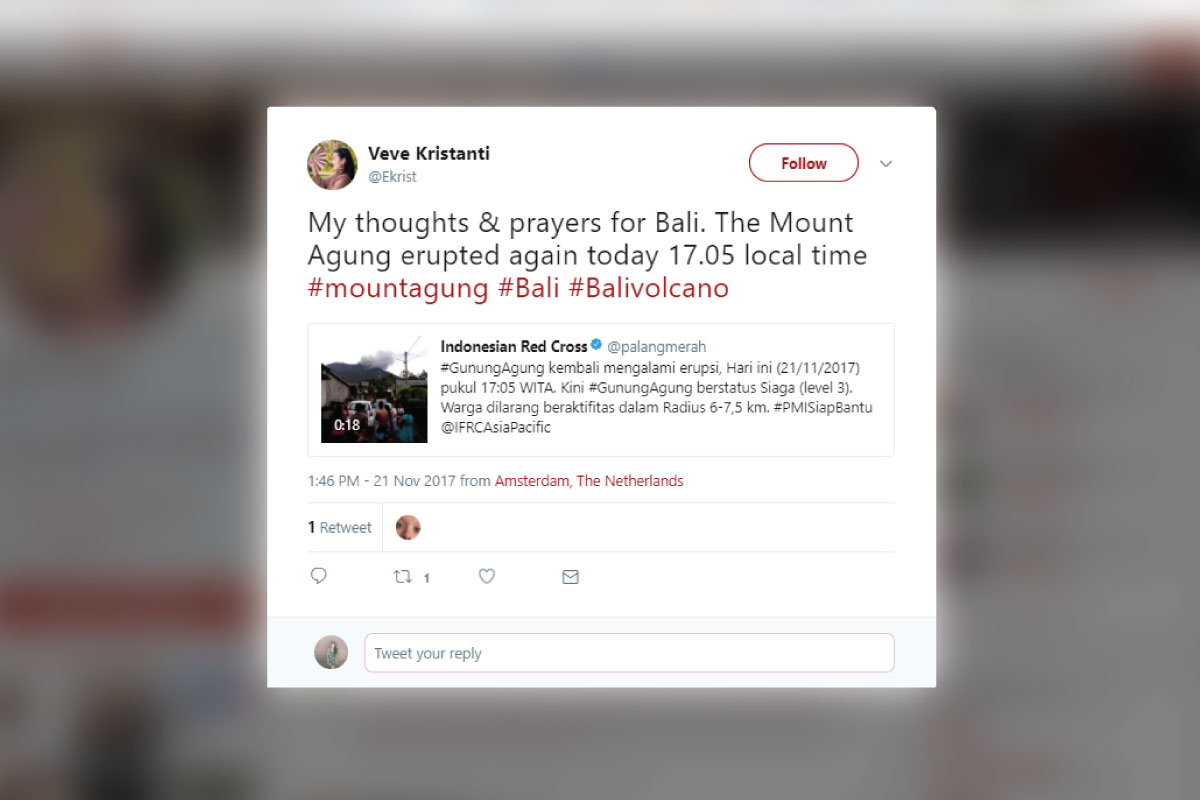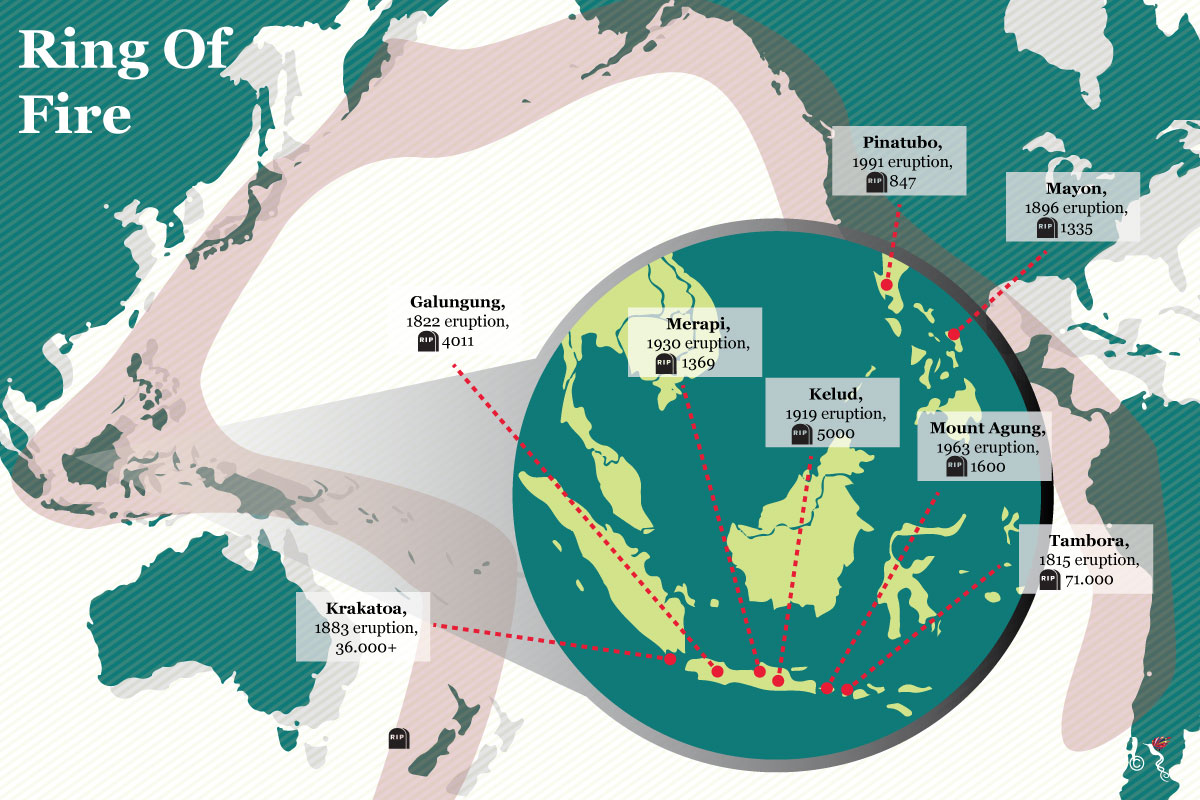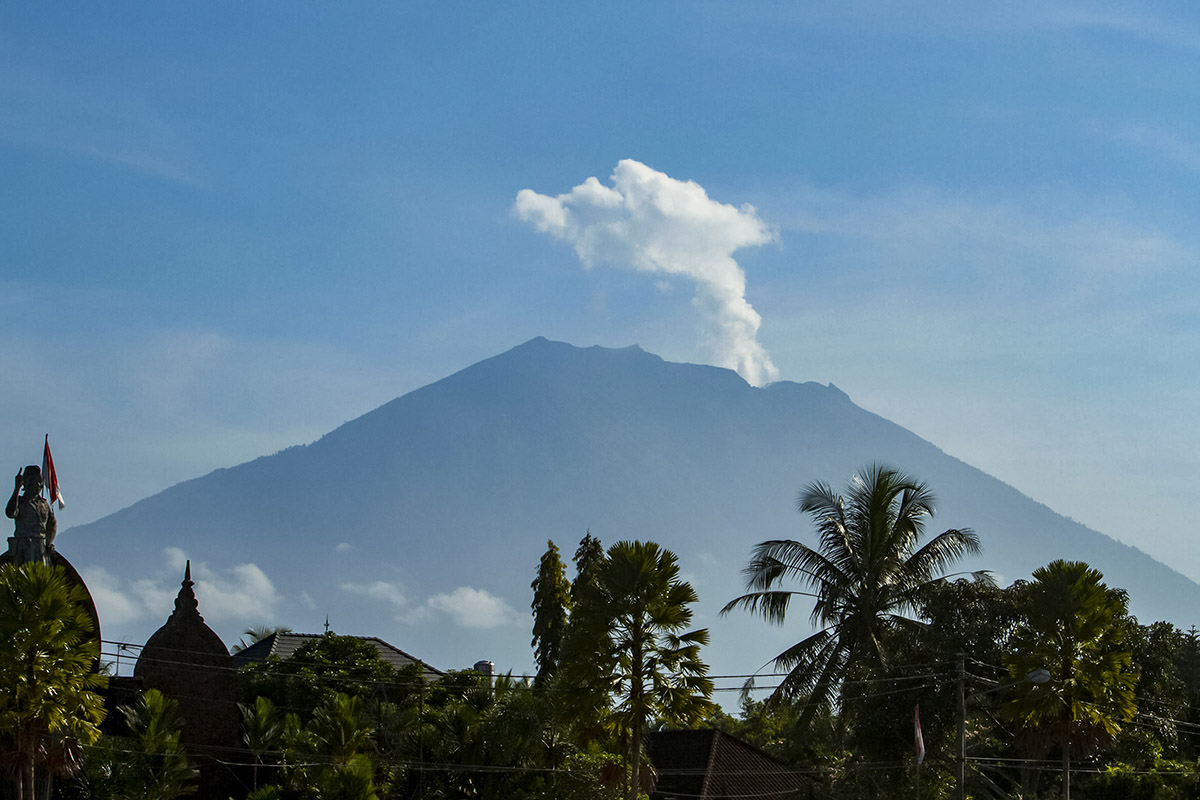The treacherous Mount Agung in Bali that has been threatening to erupt for the first time since 1963 has finally erupted and spewed steam plume at 5:05pm on Tuesday.
The Energy and Mineral Resources Ministry's Volcanology and Geological Hazard Mitigation Center (PVMBG) said in a statement that the height of the steam reached more than 700 meters from the peak of the mountain.
Following this, the statement also said that "the eruption is still ongoing. Residents should remain calm and follow the PVMBG's recommendations."
The volcano last erupted over 50 years ago which left nearly 1,600 people dead. According to volcanologists, Mount Agung hurled ash as high as 20 kilometres when it last erupted and remained active for about a year. Lava from the volcano travelled as far as 7.5 kilometres while volcanic ash reached Jakarta, which lie approximately 1,000 kilometres away.
Indonesian officials raised the alert status to the highest level on September 22. Over 144,000 people have fled the volcano and its vicinity since it started rumbling in August, but officials urged evacuees who are from outside of the immediate danger zone to return home.



Reactions of tourists and locals on Twitter.
Currently, alert levels have remained unchanged. However, according to Sutopo Purwo Nugroho, the head of the National Disaster Mitigation Agency (BNPB), “residents are advised to remain calm. Do not panic. Stay away from areas within a 6-5/5 kilometer radius of the volcano,” he said on his Twitter account.
Flights in and out the island are also not being affected as airports remain open and tourist areas are safe according to Indonesia's disaster agency.
“Although #Agung produced a phreatic eruption and a thick gray steam plume as high as 700 m on the 21/11/2017, 17:05, tourism in Bali remains safe. Ngurah Rai International Airport is safe and normal. Other areas in Bali are also safe. Do not be afraid,” Sutopo added in another tweet.
Phreatic Eruption
The phreatic eruption that occurred on Mount Agung is a steam eruption without lava ejection. Phreatic eruptions are a common precursor of volcanic activity. The eruptions are caused by groundwater flashing to steam as it is heated by magma.
“This is why a phreatic eruption is so explosive. When water flashes to steam it has a huge volume increase. This blows apart the rock around it ejecting ash in the steam plume (grey colouring) that is not from fresh magma. #Agung It's not smoke,” stated volcanologist Janine Kripper, in a tweet.
Some of the dangers from phreatic eruptions include toxic gas release which can be fatal, base surges and falling blocks.
Phreatic eruptions also took place during the catastrophic eruption of Krakatoa in Indonesia in 1883, which killed 40,000 people.

The Pacific "Ring of Fire".
‘Ring of fire’
With over 100 volcanoes within the archipelago, Indonesia is geologically the most dangerous terrain globally. It is home to about 130 volcanoes due to its position on the "Ring of Fire", a belt of tectonic plate boundaries circling the Pacific Ocean where frequent seismic activity occurs.
In 2010, Mount Merapi which is considered one of the most active and dangerous volcanoes in the world - erupted, killing some more than 300 people and forcing 280,000 people to flee.
Mount Sinabung on Sumatra island which is currently also at its highest alert level, has been active since 2013.
Recommended stories:
